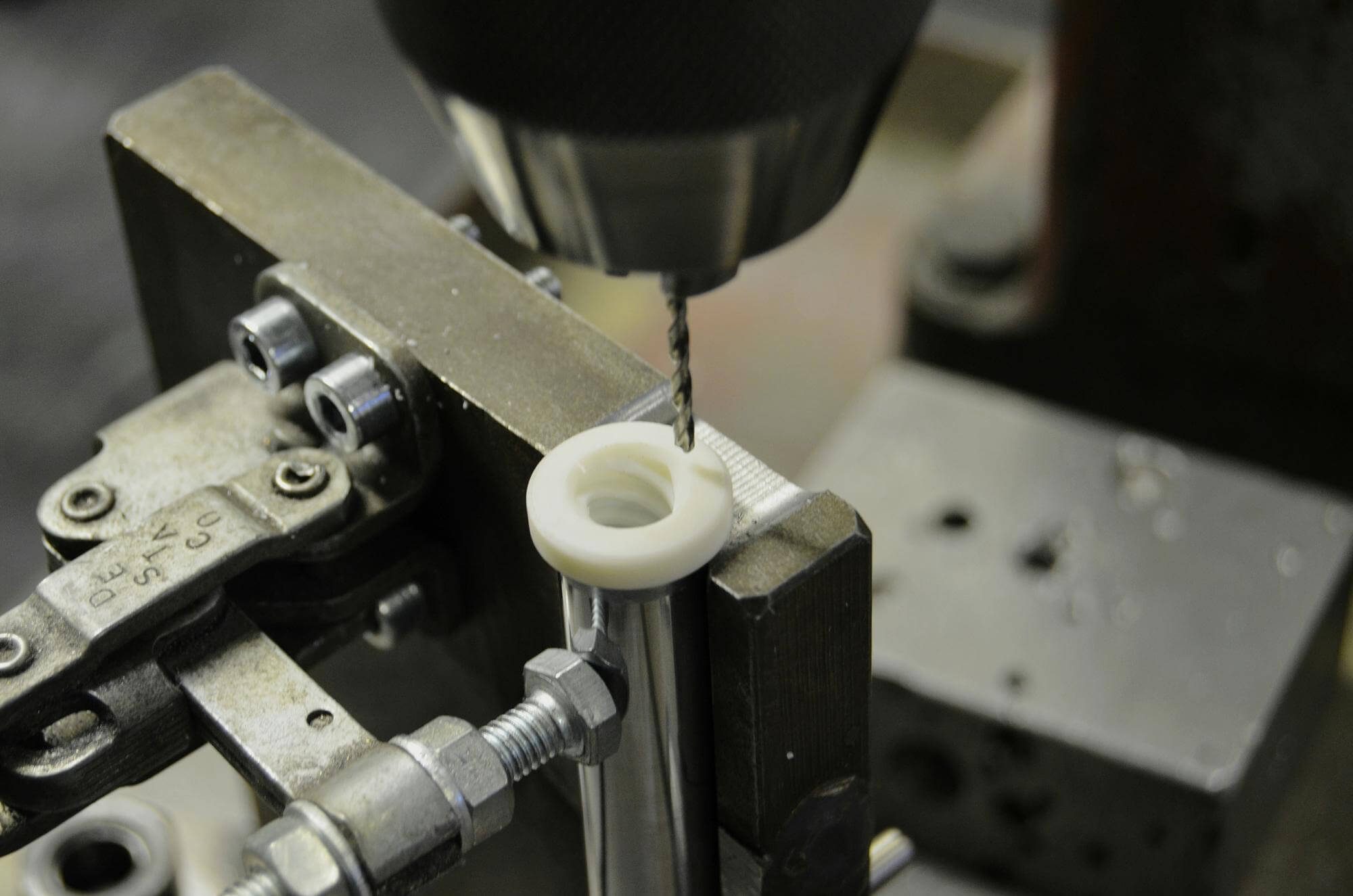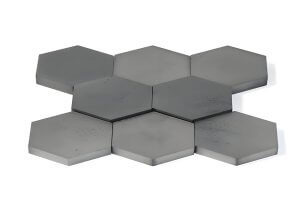In the realm of CNC machining, ceramics represent a significant challenge and opportunity. Their extraordinary properties, such as high hardness, wear resistance, and thermal stability, make them ideal for high-performance components like flanges, insulators, and various industrial parts. However, these same properties also make ceramics notoriously difficult to machine. For those in the business of procuring custom CNC machined parts, understanding the intricacies of ceramic machining is crucial to ensuring product quality and manufacturing efficiency.
In this article, we will delve into the advanced techniques required to master ceramic machining. We will cover everything from the unique properties of ceramics to the latest in tool selection, cutting parameters, and cooling strategies. Whether you’re sourcing custom flanges or other critical components, this guide will help you navigate the complexities of machining these challenging materials.
Understanding the Unique Properties of Ceramics
Ceramics are fundamentally different from metals in their atomic structure and bonding. The strong ionic and covalent bonds in ceramics result in materials that are extremely hard and brittle. These properties are advantageous in many applications but pose significant challenges during machining.
Key Properties of Ceramics:
- Hardness: Ceramics like alumina (Al2O3) and silicon carbide (SiC) are much harder than most metals. This makes them highly wear-resistant but also difficult to cut.
- Brittleness: Ceramics are prone to cracking and chipping under mechanical stress, particularly during machining processes.
- Thermal Stability: Ceramics can withstand high temperatures without deforming, making them ideal for high-temperature applications.
- Chemical Inertness: Many ceramics are resistant to corrosion and chemical attack, which is beneficial in harsh environments.
These properties make ceramics ideal for specific applications, but they also require specialized machining techniques to avoid damage and ensure precision.
Challenges in Machining Ceramic CNC Parts
The primary challenges in machining ceramics stem from their hardness and brittleness. Conventional machining methods used for metals can lead to excessive tool wear, poor surface finish, and material failure when applied to ceramics. Understanding these challenges is key to selecting the appropriate machining strategies.
Challenges Include:
- Tool Wear: The hardness of ceramics can quickly wear down conventional cutting tools. This necessitates the use of specialized tools made from materials like polycrystalline diamond (PCD) or cubic boron nitride (CBN).
- Surface Integrity: Due to their brittleness, ceramics are prone to micro-cracking and surface damage during machining, which can compromise the structural integrity of the final part.
- Cutting Forces: Ceramics require higher cutting forces compared to metals, which can lead to machine vibrations and further exacerbate surface damage.
Selecting the Right Tools for Ceramic Machining
Tool selection is one of the most critical aspects of machining ceramics. Given the material’s hardness, the cutting tool must be exceptionally hard and wear-resistant. Tools made from PCD and CBN are commonly used due to their ability to maintain sharpness and resist wear under the extreme conditions of ceramic machining.
Tool Types for Ceramic Machining:
- Polycrystalline Diamond (PCD): Ideal for machining non-ferrous materials like ceramics. PCD tools offer high wear resistance and produce excellent surface finishes.
- Cubic Boron Nitride (CBN): CBN tools are second only to diamond in hardness and are suitable for machining hard ferrous and non-ferrous materials, including ceramics.
- Carbide Tools: While not as hard as PCD or CBN, carbide tools are still used for some ceramic machining applications, particularly when cost is a concern.
When selecting a tool, consider the specific type of ceramic, the desired surface finish, and the production volume. For high-precision applications, investing in higher-quality tools like PCD or CBN can lead to better outcomes and longer tool life.
Optimizing Cutting Parameters
Machining ceramics requires precise control over cutting parameters to minimize tool wear and avoid damaging the workpiece. The key parameters to consider include cutting speed, feed rate, and depth of cut.
Optimal Cutting Parameters for Ceramics:
| Parameter | Recommended Range | Impact on Machining |
|---|---|---|
| Cutting Speed | 20-80 m/min | Higher speeds can lead to thermal damage. |
| Feed Rate | 0.01-0.1 mm/rev | Lower feed rates reduce the risk of chipping. |
| Depth of Cut | 0.1-0.5 mm | Shallow cuts are preferred to minimize stress. |
| Cooling | Flood cooling | Essential to dissipate heat and prevent cracking. |
Key Considerations:
- Cutting Speed: Lower cutting speeds are generally preferred to reduce thermal effects and tool wear. However, this must be balanced with the need for efficient production.
- Feed Rate: A lower feed rate helps in reducing the mechanical stress on the material, thus preventing chipping and cracking.
- Depth of Cut: Small depth cuts are recommended to minimize the risk of catastrophic failure in the brittle ceramic material.
- Cooling: Proper cooling is essential in ceramic machining to prevent thermal cracking and tool wear. Flood cooling with water-based coolants is commonly used.
By carefully adjusting these parameters, it is possible to achieve a balance between machining efficiency and part quality.
The Role of Cooling in Ceramic Machining
Ceramic machining generates significant heat due to the high cutting forces and the material’s poor thermal conductivity. Effective cooling is essential to prevent thermal cracking and prolong tool life.
Cooling Techniques:
- Flood Cooling: This is the most common method, involving a continuous stream of coolant directed at the cutting zone. It helps to remove heat and lubricate the cutting process.
- Cryogenic Cooling: In some advanced applications, cryogenic cooling using liquid nitrogen can be employed. This method drastically reduces temperatures, improving tool life and surface finish.
- Mist Cooling: A fine mist of coolant can be used for less intense cooling requirements, but it is generally less effective than flood cooling for ceramics.
The choice of cooling method depends on the specific application and material being machined. For most ceramic CNC machining tasks, flood cooling with water-based coolants provides a good balance of cooling and lubrication.
Case Studies in Ceramic CNC Machining
To illustrate the principles discussed, let’s look at some case studies where advanced ceramic machining techniques have been successfully applied.
Case Study 1: Precision Machining of Zirconia Flanges
- Material: Zirconia (ZrO2)
- Tooling: PCD tools
- Cutting Parameters: 40 m/min cutting speed, 0.05 mm/rev feed rate, 0.2 mm depth of cut
- Outcome: The use of PCD tools and optimized cutting parameters resulted in minimal tool wear and excellent surface finish, making these zirconia flanges suitable for high-performance applications.
Case Study 2: High-Volume Production of Alumina Parts
- Material: Alumina (Al2O3)
- Tooling: CBN tools
- Cutting Parameters: 60 m/min cutting speed, 0.1 mm/rev feed rate, 0.3 mm depth of cut
- Outcome: CBN tools provided the durability needed for high-volume production, with consistent part quality and reduced downtime for tool changes.
These case studies highlight the importance of selecting the right tools and parameters to achieve successful outcomes in ceramic CNC machining.
Conclusion: Mastering Ceramic Machining
Machining ceramics is a challenging but rewarding process that requires careful consideration of material properties, tool selection, cutting parameters, and cooling strategies. By mastering these techniques, manufacturers can produce high-quality CNC machined parts that meet the stringent demands of modern applications.
For buyers of custom flanges and other precision components, understanding the complexities of ceramic machining is essential. It not only helps in selecting the right supplier but also in ensuring that the final product meets all performance and quality requirements. With the right approach, ceramics can be machined efficiently, resulting in parts that offer unmatched durability and precision.
Remember:
- Always prioritize tool quality and appropriate cutting parameters.
- Ensure effective cooling to prevent thermal damage.
- Collaborate with suppliers who have expertise in ceramic machining.
By following these guidelines, you can ensure that your CNC machined ceramic parts are produced to the highest standards, meeting the demands of even the most challenging applications.
Other Articles You Might Enjoy
- Mastering Measurement Techniques for CNC Machining Parts
Measurement tools are the unsung heroes in the world of CNC machining. They ensure that every part produced meets the necessary specifications and standards. Understanding these tools and their applications…
- Mastering Cylindrical Cavity Machining for CNC Machined Parts
Cylindrical cavities are a staple in CNC machining, offering a versatile range of applications from simple bores to complex recesses. This guide aims to walk you through the essentials of…
- Unraveling the World of CNC Machined Plastic Parts(CNC machined plastic parts Mabel)
Modern innovations have taken traditional manufacturing methods to new heights. One such innovation that stands out is Computer Numerical Control (CNC) machining, a process used extensively in various industries from…
- CNC Machined Plastic Parts: An In-depth Overview(CNC machined plastic parts Norman)
Computer Numeric Control (CNC) machining is an advanced manufacturing process where pre-programmed software dictates the movement of factory machinery and tools. These applications can carry out complicated manufacturing tasks with…
- Enhancing CNC Machining with Smart Alloys: Shape Memory Metals vs. Traditional Alloys
Introduction to CNC Machining Computer Numerical Control (CNC) machining stands as a cornerstone in modern manufacturing, enabling the precise and automated shaping of materials. This technology relies heavily on the…
- Requirements for CNC Machining Parts
Preparation Work Complete the necessary preparation before machining, including process analysis, process route design, tool and fixture selection, and program compilation. online cnc machining service Operating Steps and Contents Start…






